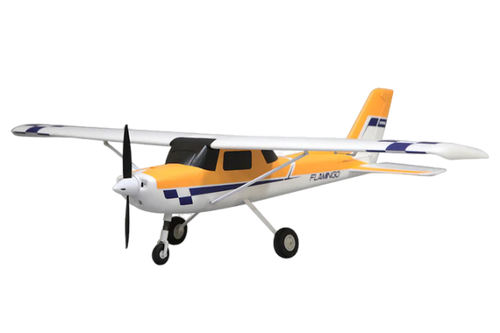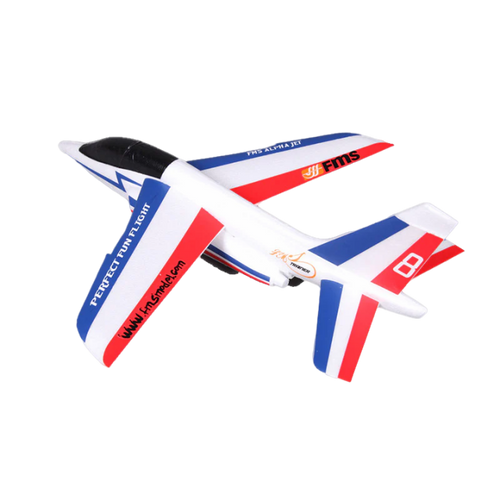FMS × RC Air Shenanigans
TikTok Livestream
https://www.tiktok.com/@rc_air_shenanigans
Livestream Title:
Easy to Fly RC Airplanes for Beginner
Livestream Date:
On 2024/06/22 08:00-11:30AM MST
Livestream Platform:
@rc_air_shenanigans TikTok Channel
Join @rc_air_shenanigans TikTok Livestream
Must-Win Superb Free RC Planes!

FMS 1220mm Ranger RTF x1
Value: $249.99

New RC Flight Simulator x3
Value: $49.99

FMS Alpha Hand-Launched Jet x2
Value: $29.99

FMS Customized Cover for RC Airplane X2
Value: $19.99

$20 Coupon X2
Value: $20
Livestream Exclusive Discounts
Enjoy Up to 20% Off Trainer RC Planes
Beginner Airplane Father's Day Sale
Don't miss out on this big discount, which ends on June 23rd soon.
Grab Yours Now!
FMS RC PLANES IGNITE YOUR DREAM TO FLY
Beginner-friendly Operate
Fast 5 minute assembly, exclusive Reflex flight stabilization technology
Impressive Performance
Spectacular power system & floats design allow cooler flight, ground & water operations
Reassuringly Stable Landing
Patented high-strength tricycle landing gear makes ground handling a breeze
Durable and Robust Design
Built with ultralight EPO foam, robust plastic struts have extra strength
Easy To Fly, Easy To Learn
Fun And Passion Are The Fuel
A Trusty "Co-Pilot"
Fly Never So Simple
Designed for RC plane beginners,Reflex technology will rapidly level the aircraft from any attitude when this mode is activated.Stabilized mode combines accelerometer and gyro data to determine how to level the aircraft when the controlsticks are released -giving pilots absolute peace of mind.
Patented Landing Gear
Designed For Safe
Patented high-strength tricycle landing gear makes ground handling a breeze. The ranger comes with an optional floats landing set, scale your fun as a high-strength metal landing gear for ground operation and a pair of floats with an intergraded rudder for water operations.


Ready To Fly ?
Just 5 Minutes.
The Ranger is designed with ease of assembly in mind for RC plane beginners. Requiring only 6 (wheeled landing gear) or 10 (floats) screws to completely assemble, just need 5 minutes. the longest wait time is the time it takes to charge the battery.

Stylish Paint Scheme, Color the Sky
Designed with a yellow and white high-visibility color scheme, the ranger can always be easily orientated even in gloomy, overcast weather. Moreover, FMS RC planes utilize eco-friendly paints to protect our environment.
High-profile Power System, More Agility
A great aircraft is nothing without a great, dependable power system - FMS has equipped the ranger with a 3136/1200KV outrunner motor with 20A Predator ESC, which allows the ranger to climb almost vertically on demand and burst spectacular power & agility to soar the sky or gallop the sky.

More Robust & Durable
Advanced EPO material creates a lightweight yet durable airframe, resistant to everyday wear and tear. The large high-wing design ensures stability in flight, while sturdy plastic struts and patented metal landing gear provide extra strength and durability for aerobatics and rough landings.
FMS PAPER PLANE Challenge
#Share Your Coolest Paper Plane#
Paper Plane Drawing
Share Your Paper Plane & Win Super Prizes
The RC planes prizes is US viewers only can be claimed.

1300mm PA-18 PNP
First Prize: 1 Winner
Value: $199.99

FMS 1220mm Ranger PNP
First Prize: 1 Winner
Value: $189.99

FMS Model Airplane Stand
Second Prize: 2 Winner
Value: $79.99

FMS Alpha Hand-Launched Jet
Third Prize: 3 winners
Value: $29.99

FMS Customized Cap
Fourth Prize: 5 winners
Value: $14.99

FMS Customized Battery Strap
Fifth Prize: 5 winners
Value: $4.99
Find Your Relaxation Zone with FMS RC Beginner Plane






Learn To Fly With FMS
Skill, know-how and space has always been limiting factors in bringing new enthusiasts into the wonderful world of R/C aviation, until now! FMS has always been dedicated to enabling pilots of every skill level to enjoy the thrills of flight. Innovation then, is in our DNA.
Utilizing 15 years of extensive research and investment, FMS has not only engineered cutting-edge rc planes with unparalleled performance and over 100 innovative patents to beginner & expert pilots. Not only that, we are actively cooperating with top engineers in the R/C field, well-known RC clubs, etc., and are committed to providing more fun and skill improvement for beginners, and raising the flying experience to an exciting new level.
Quality-Crafted Accessories
Replacement & Upgraded Accessories
FMS Support Is Your Backup
We’re as obsessed with service as we are with hobby. Investing in a hobby should be enjoyable and exhilarating. "Pay Less, Get More'' is brand service that FMS hopes every customer can enjoy. We treats you like a person, not a commission. Whether it's product design or after-sales support, FMS is your most trusted ally.
Learn FMSYour Personal RC Flight Coach
The most cost-effective way to learn to fly

RC Flight Simulator Controller
Simulate real flight maneuvers, including takeoff, flight, landing, and various flight conditions. They can also provide a realistic flight experience for novice pilots, allowing them to practice flying skills and experience the thrill of flight without leaving home.
Simulation VideoGet $49.99

Effective Practice
100+ Planes Available For Practice
Multi-Scene
Beach, Grassland, Cement Field, etc.
Support Modes
AeroFly, RealFlight, FMS, G5.5, VRC2, etc.
Compatibility
32-bit or 64-bit XP, WIN10 System
Affordable Price
Provide Free Software Download
USB Power Supply
USB Output Connect Directly To The PC
Buy On FMS Offical Website
1V1 Expert Service
Exclusive 1V1 service channel for beginners, providing any information about technical support, pre-sale & after-sales service
Reward Point
Join FMS website RC club to earn more points and redeem your rewards! Buy more, earn more.
Email Subscriptions
Be the first to know about new releases, exclusive discounts, special sales, RC events by Email.
Various Payment Methods
We accept Paypal, Visa, and Credit/Debit Card. etc, as many as 30 credit card gateways are available.
Free Shipping
Free shipping on orders over $99, 3-5 working days fast USA delivery. (other countries will be some different)
No-hastle Return
We offer a 30-day return policy, the new and unused products purchased directly from FMS website can be returned for refund or credit.






















































